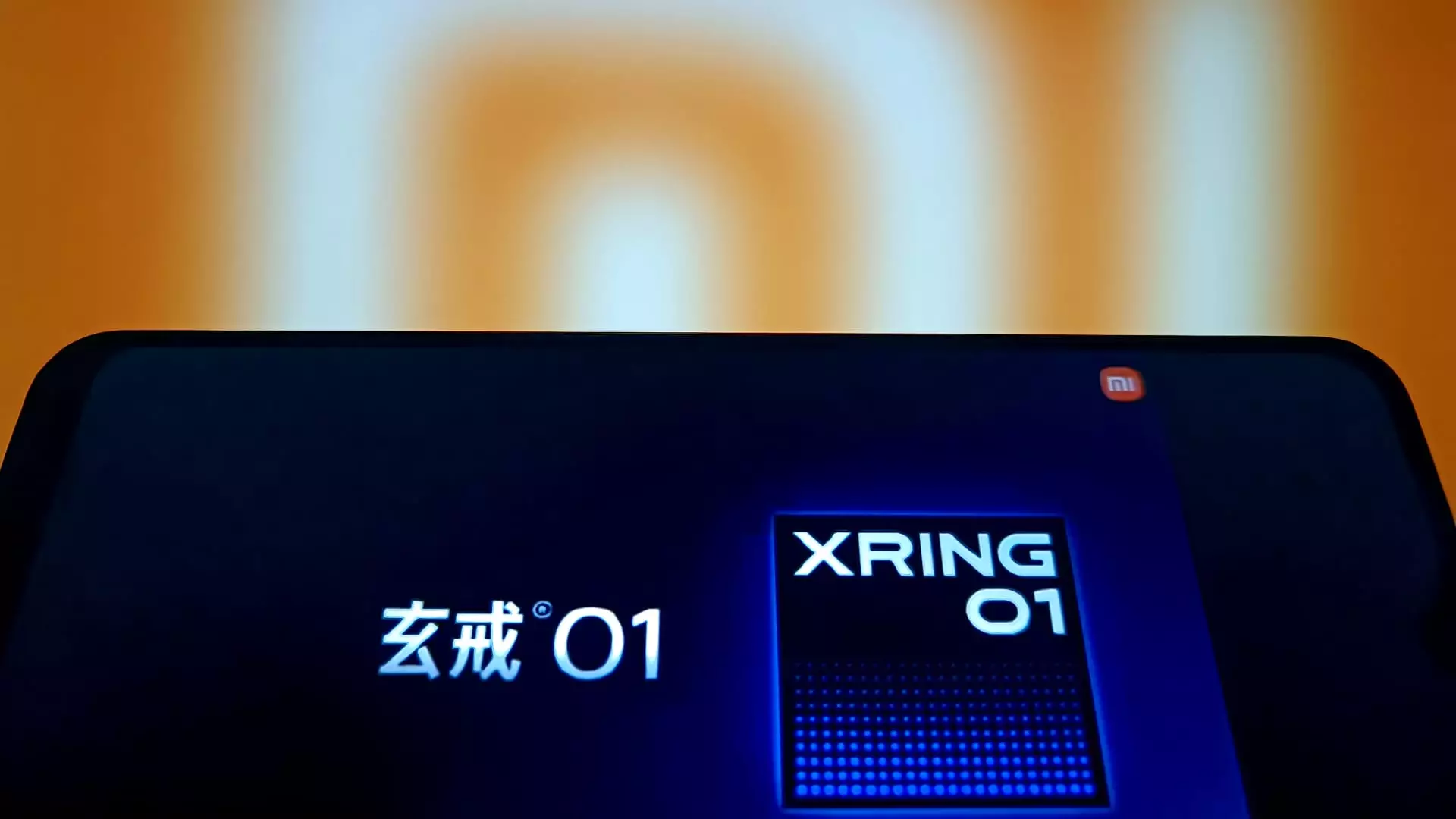In the high-stakes smartphone market, where luxury and brand loyalty often dictate consumer choices, Xiaomi is making waves by challenging the status quo set by industry giants like Apple. With the launch of the Xiaomi 15S Pro, which starts at an appealing price point of 5,499 yuan ($764), the Chinese smartphone maker has positioned itself as a formidable player, especially in a market ripe for disruption. The juxtaposition of Xiaomi’s aggressive pricing against Apple’s steep costs—starting at 7,999 yuan for the iPhone 16 Pro and soaring to 9,999 yuan for the Pro Max—highlights the shifting dynamics of consumer expectations, where practicality and performance are increasingly being weighed against the prestige of a brand.
What gives Xiaomi an edge, beyond its attractive pricing, is the impressive specs of its newly developed Xring O1 chip. CEO Lei Jun claimed that it outperforms Apple’s A18 Pro chip on various technical fronts, including thermal management during intensive tasks, such as gaming. While these assertions await independent verification, they stir the pot in a market where technological capability is often intertwined with consumer perception.
Strategic Investment in Innovation
Xiaomi’s commitment to innovation is underscored by its plan to invest a staggering 200 billion yuan in research and development over the next five years. This long-term vision implies a serious dedication to keeping up with—and potentially surpassing—its competitors in the intricate tech landscape. The financial commitment is not solely focused on smartphones; it also encompasses a broader technological ecosystem that includes Xiaomi’s burgeoning electric vehicle (EV) sector. The company has already made strides with the SU7 sedan and is set to introduce the YU7 SUV, built to undercut established players like Tesla.
In an environment where chip technology is increasingly influenced by geopolitical factors, Xiaomi’s announcement of substantial investment in its own chip development is telling. Since the U.S. has tightened restrictions on China’s access to advanced semiconductor manufacturing, Xiaomi’s move can be seen as a proactive strategy to maintain its technological independence. The significant financial outlay signals a desire to vault from reliance on third-party suppliers like Qualcomm and MediaTek, aiming instead to gain mastery over one of the smartphone industry’s most pivotal components.
The Impact of Pricing Strategies
Xiaomi’s pricing strategy is both a calculated risk and a shrewd response to current economic conditions, particularly in China where consumers are looking for value. The inclusion of a state-subsidized discount further enhances the attractiveness of the Xiaomi 15S Pro, potentially boosting sales figures significantly. Conversely, Apple, despite its brand loyalty, runs the risk of alienating budget-conscious consumers, as its pricing strategies appear incongruent with the needs of a market increasingly focused on affordability.
Moreover, it’s crucial to acknowledge the implications that price cuts and competitive strategies have on overall market dynamics. By emphasizing value while optimizing performance, Xiaomi is not merely attempting to seize market share from Apple; it’s creating an environment where consumer preferences can shift. This momentum could ripple through the industry, compelling other competitors to rethink their own pricing and product development strategies.
Technological Aspirations Beyond Smartphones
While the spotlight rests squarely on the latest smartphone release, Xiaomi’s ambitions extend beyond mobile technology. With a burgeoning presence in the electric vehicle space, the company is weaving itself into the fabric of a rapidly evolving technological landscape. The recent incident involving an SU7 crash that tragically resulted in fatalities may cast a shadow on its automotive ambitions, but it also emphasizes the importance of regulatory safety measures and the need for responsible advertising—challenges that any company at the forefront of technological change must navigate.
Furthermore, the revelation that over 42% of Xiaomi’s total revenue comes from international markets speaks volumes about its global strategy. As the company gears up for a new earnings report, it stands on an impressive growth trajectory that defies simplistic views of a mere “Apple challenger.” Instead, Xiaomi is emerging as a multifaceted technology company that is redefining what it means to innovate.
In this ever-shifting arena, Xiaomi isn’t merely looking to compete; it aims to disrupt, leveraging strategic pricing, robust R&D investments, and an expanding product portfolio to push boundaries and redefine consumer expectations globally.

